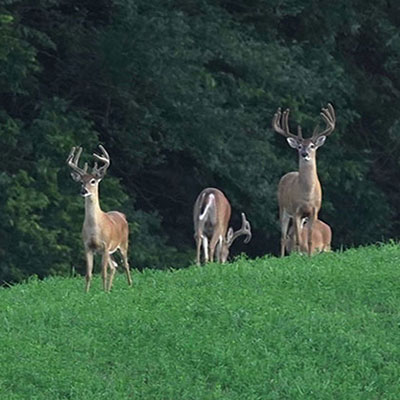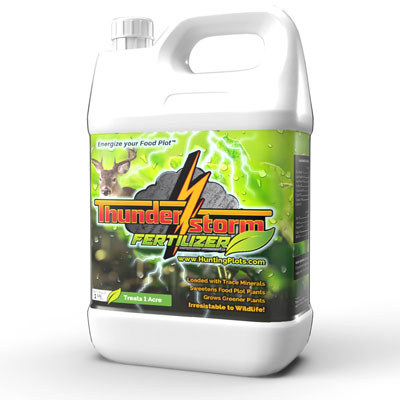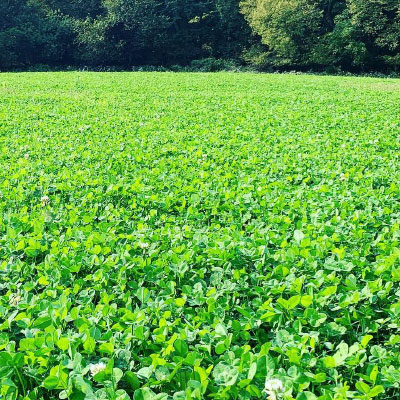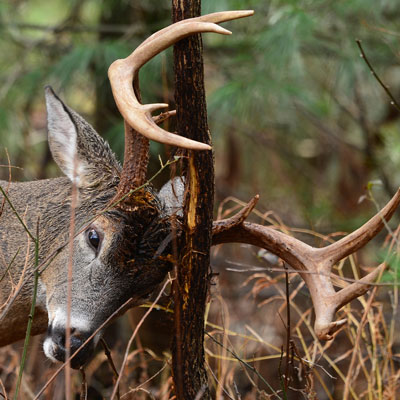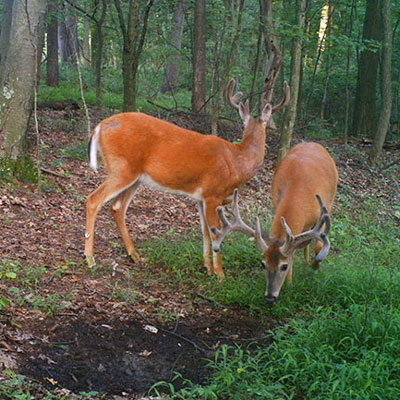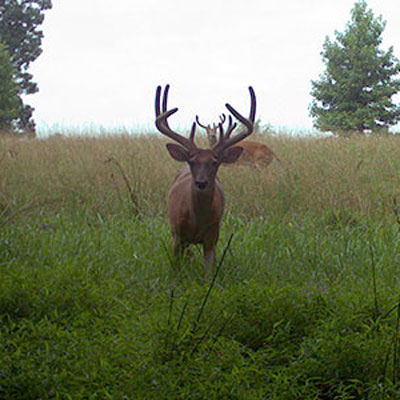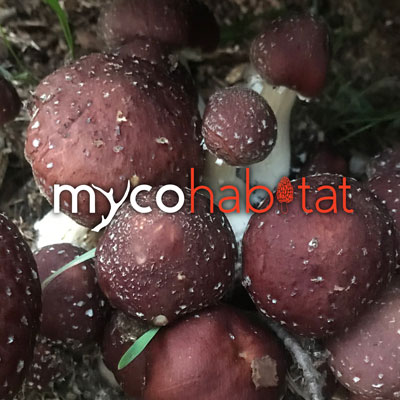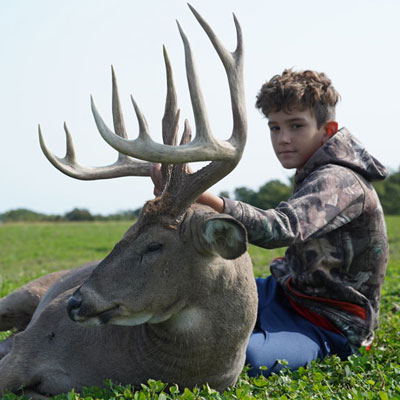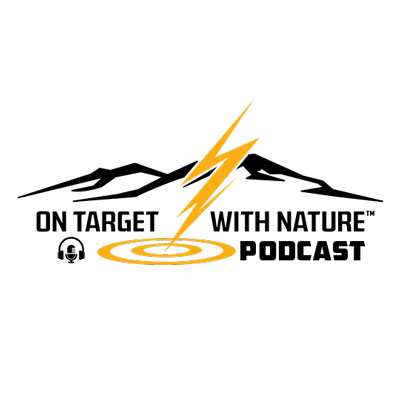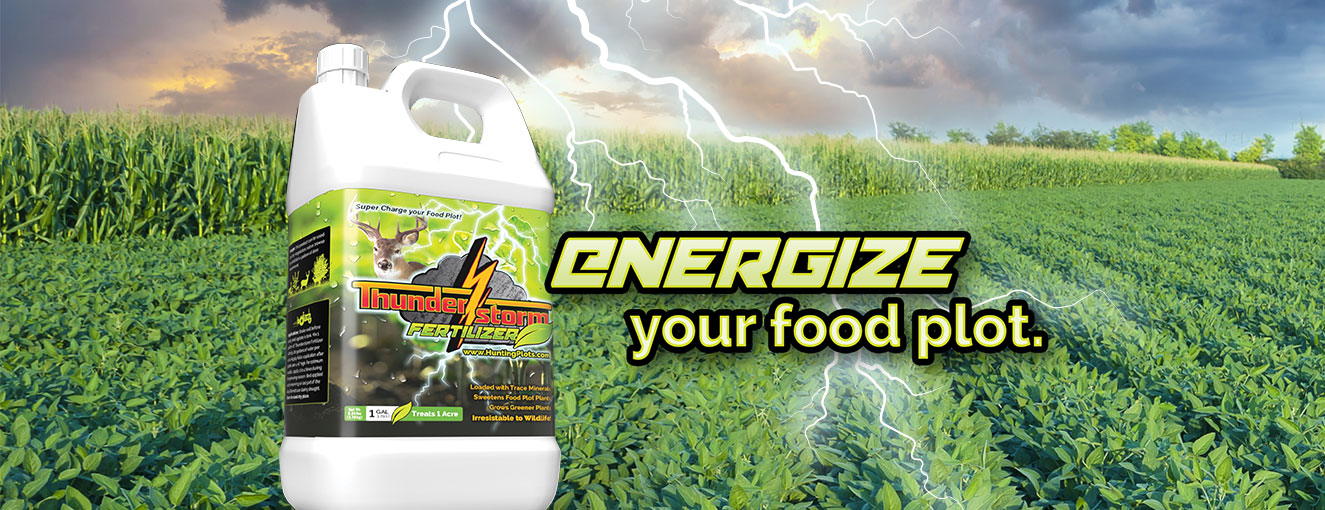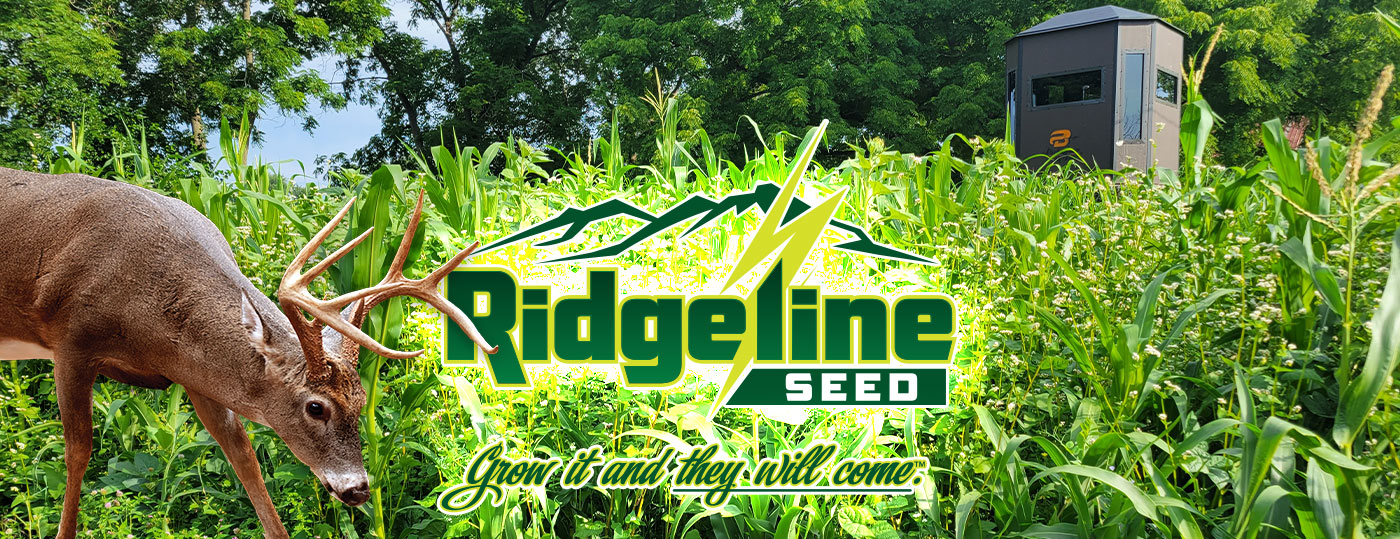
Episode 10 | May 22, 2023 | John Stoltzfus |
(More Episodes)
Clover Maintenance
Welcome to the latest On Target with Nature recording, brought to you by John Stoltzfus. Are we grateful for our privilege to live in the land we live in? That's some questions that I have to ask myself, and also you guys. Do we enjoy our moments that we have in the great outdoors, and are we intentional about how we use our resources to honor and glorify our Creator? As stewards, we are entrusted and it is our duty to make sure that we make it the best that we can with the resources that we have.
We are still in the peak planting season for food plotters, especially in the northern mountain country, where they are probably two or three weeks behind us here in southeast PA. We have all our plots planted here for our own properties and for the field day. All those plots are in, and now it's out of our control. We can plant the seeds, but we cannot give the increase. We can try to balance the soil, we can try to make the soil better, but it's such a complex soil. There's so many variables; there's weather, there's all kinds of- there's heat, there's drought, and so we gotta plant the seeds and have the faith of a farmer.
I'm gonna share a quick story on that itself - the faith of a farmer. It's something we could all apply to our own journey of life. Several years ago, we had a dry summer over the time that wheat was ready to be harvested. There's a particular farmer that harvested the wheat and went right in after the harvest and planted soybeans. Now, this was on a lot of acres. I don't know exactly how many. This was a story that was shared by someone - a customer that stopped in. And it was a reminder to me that I should have more of that faith. This neighbor to the farmer here noticed that he went right in after, planted these soybeans and approached the farmer about it. "Why would you spend thousands of dollars on soybean seeds and plant when it's so dry? We're in a drought. What if we don't get rain for another three weeks?" The farmer didn't hesitate, "I did what I know to do, and I expect that the Creator will bring the rain, and he will bless it." So two days later, it rained about an inch and a half, and this neighbor, it crossed his mind, "Wow, the faith of a farmer!" and he had a bumper crop of late soybeans that year.
The moral of the story is this: if we do nothing because we are afraid or we fear, "What if it doesn't work out?" We'll definitely receive nothing. But now that doesn't mean we will always receive a bumper crop like this farmer did; we know that's not true. But if we have the faith of a farmer, we will have a deeper connection with our Creator and appreciate when he does bless it.
So let's finish this recording with talking about clover maintenance. Again, it is expected of us to help along with what nature can bring to us and what the weather and all that plays into the picture.
I got feedback last week from Big Buck Down Outfitters in Iowa. Now they have rich, dark black soil out there. But, they still have to manage it; they still have to work at it just like we do. And I had the privilege to start working with them about four years ago. Met 'em at the Great American Outdoor Show in Harrisburg, and it's been a blessing to be a part of their program. They manage about 6,000 acres and about 100 acres in food plots, and they have really expanded on their clovers. They have found that clovers is a staple for their program, something that is just dependable, it's fairly easy to manage, and it produces some big bucks for 'em. They have shot Boone and Crockett Buck in early season for the last three seasons now, since being on the program of doing more clover and maintaining the clover. That's the main thing I want to get out of it. If you get a good established clover plot and maintain it, it can be extremely effective. So that is now going into the fourth year, and they said they mowed it and this is one of the best clover plots that they ever had. They usually mow it about now - mid-May - and then they let it regrow a little bit, and then they'll spread it with Thunderstorm Fertilizer, and if necessary, they'll use a herbicide with it.
And that is one of the big benefits of the Thunderstorm, is to be able to tank-mix it with your weed control as a weed & feed, and save yourself the time because you can get it in one shot. You can mix the two together - it's time saving and it does a really good job tank-mixed together. For our weed control, if we're struggling with broad leafs only and we don't have grass problems, we'll use Butyrac. Butyrac is a broad leaf spray, but doesn't affect clover and alfalfa. It will kill chicory, for the most part, unless you spray it when it's at - I think there's some tolerance to chicory if it's sprayed at the right time - but most times it's gonna take the chicory out; but it will not kill clover or alfalfa. If there's not a lot of weeds and you're just dealing with grass, then we would use Clethodim, which is a grass killer. And that - I'm not sure if I have that on my recording on the rate - but the Butyrac, we would use 1½ quart per acre. And the Clethodim we would use 16 ounces (1 pint) per acre. And it's important to know that if you're spraying for grasses that you need a surfactant with it. That is a sticker crop oil that will help it stick to the grasses, unless you use Thunderstorm. Thunderstorm has a surfactant or a sticker in there - a natural surfactant - that helps it stick to the plant. So it'll stick to the grasses, it'll help that herbicide stick and that it does a kill-off without needing the other crop oil. So if there's not a lot of weeds, then you should consider just mowing and fertilizing.
When mowing clover, remember, we don't wanna mow it low to the ground. We should probably rather call it clipping, due to the fact that we don't want it lower than 6-8 inches tall. We do not want to expose the soil; we don't want that sunlight to get to the soil. This does two things: it keeps the soil covered and the moisture there, so it keeps it from drying out if we do get a couple weeks of dry weather and also allow - it keeps the weed seeds from germinating if you have that shade of the clover is shading out the ground. The weed seeds will not germinate nearly as quickly. By feeding your clover in the spring, especially with a fertilizer that has trace minerals and ingredients to increase the protein levels, you can have a major impact on herd health and antler growth, and especially what Big Buck Down is experiencing in early season.
So their program is to hit their clover plots twice a year with that fertilizer. They will spray in the spring, and they'll spray like 10 days before season. And again, they have the first - I think the first year they did it - they shot four buck in ewe season in September, one of them that scored 174. And they thought, "Oh, maybe it was just a coincidence." The next year they shot a 200-incher - and I'm not saying this to boast or to say that the Thunderstorm is gonna, you know, automatically you spray that on there, and you're gonna shoot 170 inch buck. It's gonna vary by your property and what you have on your property. - This is only an experience from the situation that they had. They have some really big bucks. They only shoot mature deer.
But we've had some testimonials locally in PA of some nice deer getting shot early season as well. One in the 140's in particular that was shot opening day, coming into a plot. But again, this is something that you can do to help with the protein levels and the trace mineral levels that are in the plant. I had a report on Saturday from Maryland of a newborn fawn, probably within - they said it was probably within 24 hours of being born. So that is so neat to be able to see and observe that, and they weren't gonna see that from their couch.
So, this is an exciting time of the year seeing a whole new generation of fawns being born, and that's our future for our hunting. And the better our habitat is - the more we do to our habitat - the more of their genetic potential they will be able to express. There is still a little time left to chase turkeys and still - in my opinion - plenty of time to plant your food plot if you haven't gotten an opportunity to do that yet. If you're starting a new plot, you can go in and clear that. I will be doing that on some new plots - clearing them this week - they are all overgrown fields, and I will be going in and and clearing those this week. We still have time; we have seed options that can be planted from February all the way on to end of September. Obviously, February, we'd be talking about frost seeding; end of September, we'd be talking about strictly cereal grains, maybe even into early October, depending on the weather. But if you're looking and wondering what you could - or should - plant on your property, feel free to give us a call and we can help and guide you in the right direction.
Until next time, I hope you get a chance to get outdoors in nature and enjoy its many blessings.
More Episodes











